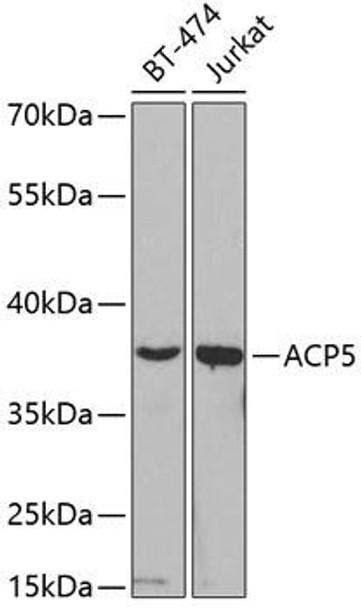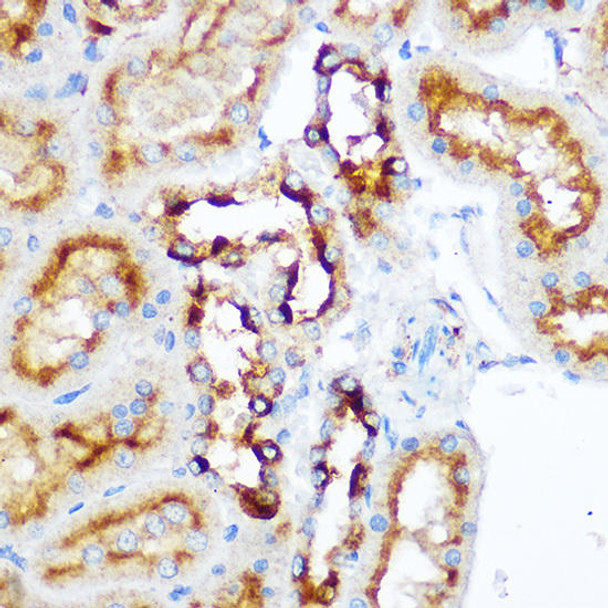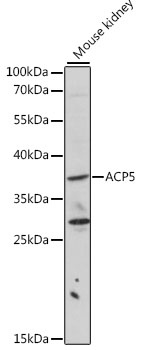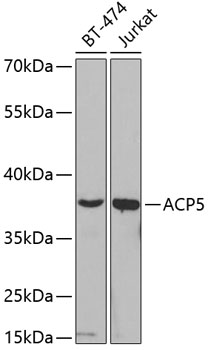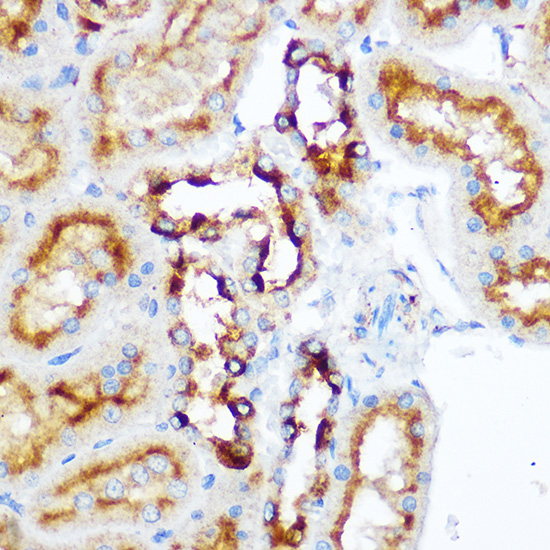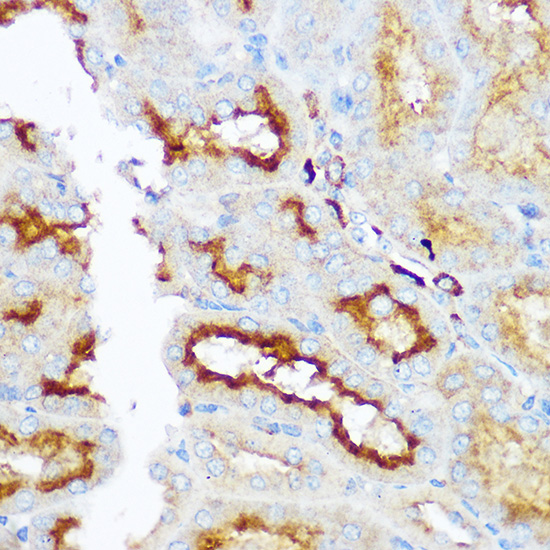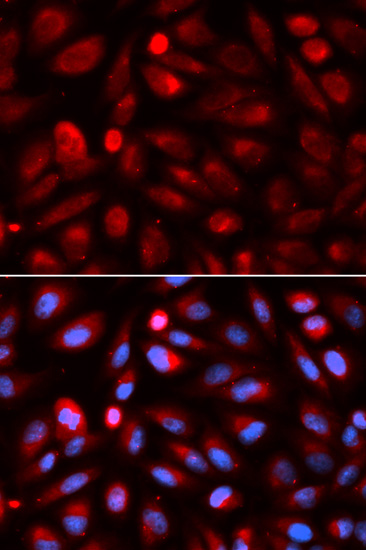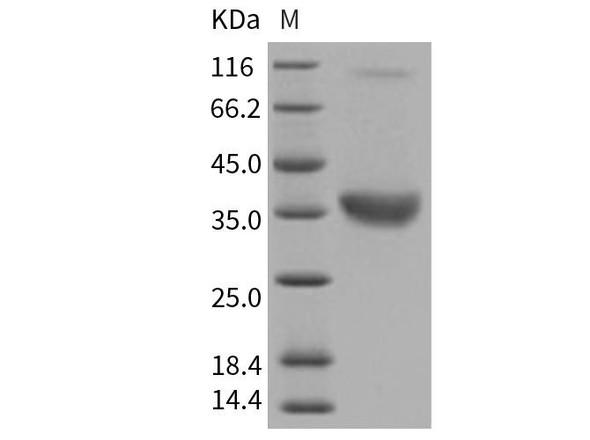Anti-ACP5 Antibody (CAB2528)
- SKU:
- CAB2528
- Product Type:
- Antibody
- Reactivity:
- Human
- Mouse
- Rat
- Host Species:
- Rabbit
- Isotype:
- IgG
- Research Area:
- Cell Biology
Description
Anti-ACP5 Antibody (CAB2528)
The ACP5 Polyclonal Antibody (CAB2528) is a valuable tool for researchers studying the ACP5 protein, also known as tartrate-resistant acid phosphatase Type 5. This antibody, produced in rabbits, is highly specific to human samples and is validated for use in Western blot applications.ACP5 is an enzyme found in osteoclasts and macrophages, playing a crucial role in bone resorption and other cellular functions. Dysregulation of ACP5 activity has been implicated in diseases such as osteoporosis and cancer, making it an important target for research in the field of bone biology and oncology.
By binding to the ACP5 protein, this antibody allows for the detection and analysis of ACP5 in various cell types, providing valuable insights into its function and regulation. Researchers in the fields of bone metabolism, cancer biology, and cell signaling will find this antibody essential for their studies on ACP5 and its involvement in various disease states.
| Antibody Name: | Anti-ACP5 Antibody |
| Antibody SKU: | CAB2528 |
| Antibody Size: | 20uL, 50uL, 100uL |
| Application: | WB IHC IF |
| Reactivity: | Human, Mouse, Rat |
| Host Species: | Rabbit |
| Immunogen: | Recombinant fusion protein containing a sequence corresponding to amino acids 76-325 of human ACP5 (NP_001602.1). |
| Application: | WB IHC IF |
| Recommended Dilution: | WB 1:500 - 1:2000 IHC 1:50 - 1:200 IF 1:50 - 1:200 |
| Reactivity: | Human, Mouse, Rat |
| Positive Samples: | BT-474, Jurkat |
| Immunogen: | Recombinant fusion protein containing a sequence corresponding to amino acids 76-325 of human ACP5 (NP_001602.1). |
| Purification Method: | Affinity purification |
| Storage Buffer: | Store at -20'C. Avoid freeze / thaw cycles. Buffer: PBS with 0.02% sodium azide, 50% glycerol, pH7.3. |
| Isotype: | IgG |
| Sequence: | TGVQ DIND KRFQ ETFE DVFS DRSL RKVP WYVL AGNH DHLG NVSA QIAY SKIS KRWN FPSP FYRL HFKI PQTN VSVA IFML DTVT LCGN SDDF LSQQ PERP RDVK LART QLSW LKKQ LAAA REDY VLVA GHYP VWSI AEHG PTHC LVKQ LRPL LATY GVTA YLCG HDHN LQYL QDEN GVGY VLSG AGNF MDPS KRHQ RKVP NGYL RFHY GTED SLGG FAYV EISS KEMT VTYI EASG KSLF KTRL PRRA RP |
| Gene ID: | 54 |
| Uniprot: | P13686 |
| Cellular Location: | Lysosome |
| Calculated MW: | 36kDa |
| Observed MW: | 37kDa |
| Synonyms: | ACP5, HPAP, TRACP5a, TRACP5b, TRAP, TrATPase |
| Background: | This gene encodes an iron containing glycoprotein which catalyzes the conversion of orthophosphoric monoester to alcohol and orthophosphate. It is the most basic of the acid phosphatases and is the only form not inhibited by L(+)-tartrate. |
| UniProt Protein Function: | ACP5: Involved in osteopontin/bone sialoprotein dephosphorylation. Its expression seems to increase in certain pathological states such as Gaucher and Hodgkin diseases, the hairy cell, the B-cell, and the T-cell leukemias. Defects in ACP5 are the cause of spondyloenchondrodysplasia with immune dysregulation (SPENCDI). A disease characterized by vertebral and metaphyseal dysplasia, spasticity with cerebral calcifications, and strong predisposition to autoimmune diseases. The skeletal dysplasia is characterized by radiolucent and irregular spondylar and metaphyseal lesions that represent islands of chondroid tissue within bone. ACP5 inactivating mutations result in a functional excess of phosphorylated osteopontin causing deregulation of osteopontin signaling and consequential autoimmune disease. Belongs to the metallophosphoesterase superfamily. Purple acid phosphatase family. |
| UniProt Protein Details: | Protein type:Motility/polarity/chemotaxis; Phosphatase; Cofactor and Vitamin Metabolism - riboflavin; EC 3.1.3.2 Chromosomal Location of Human Ortholog: 19p13.2 Cellular Component: lysosome; integral to membrane; cytosol Molecular Function:acid phosphatase activity; ferric iron binding; ferrous iron binding Biological Process: riboflavin metabolic process; negative regulation of interleukin-12 production; defense response to Gram-positive bacterium; vitamin metabolic process; dephosphorylation; response to cytokine stimulus; negative regulation of nitric oxide biosynthetic process; negative regulation of inflammatory response; response to lipopolysaccharide; negative regulation of interleukin-1 beta production; negative regulation of tumor necrosis factor production; negative regulation of superoxide release; water-soluble vitamin metabolic process; bone resorption Disease: Spondyloenchondrodysplasia With Immune Dysregulation |
| NCBI Summary: | This gene encodes an iron containing glycoprotein which catalyzes the conversion of orthophosphoric monoester to alcohol and orthophosphate. It is the most basic of the acid phosphatases and is the only form not inhibited by L(+)-tartrate. [provided by RefSeq, Aug 2008] |
| UniProt Code: | P13686 |
| NCBI GenInfo Identifier: | 56757583 |
| NCBI Gene ID: | 54 |
| NCBI Accession: | P13686.3 |
| UniProt Secondary Accession: | P13686,Q2TAB1, Q6IAS6, Q9UCJ5, Q9UCJ6, Q9UCJ7, A8K3V2 |
| UniProt Related Accession: | P13686 |
| Molecular Weight: | 325 |
| NCBI Full Name: | Tartrate-resistant acid phosphatase type 5 |
| NCBI Synonym Full Names: | acid phosphatase 5, tartrate resistant |
| NCBI Official Symbol: | ACP5 |
| NCBI Official Synonym Symbols: | TRAP; SPENCDI |
| NCBI Protein Information: | tartrate-resistant acid phosphatase type 5; TrATPase; tartrate-resistant acid ATPase |
| UniProt Protein Name: | Tartrate-resistant acid phosphatase type 5 |
| UniProt Synonym Protein Names: | Tartrate-resistant acid ATPase; TrATPase; Type 5 acid phosphatase |
| Protein Family: | Acyl carrier protein |
| UniProt Gene Name: | ACP5 |
| UniProt Entry Name: | PPA5_HUMAN |

